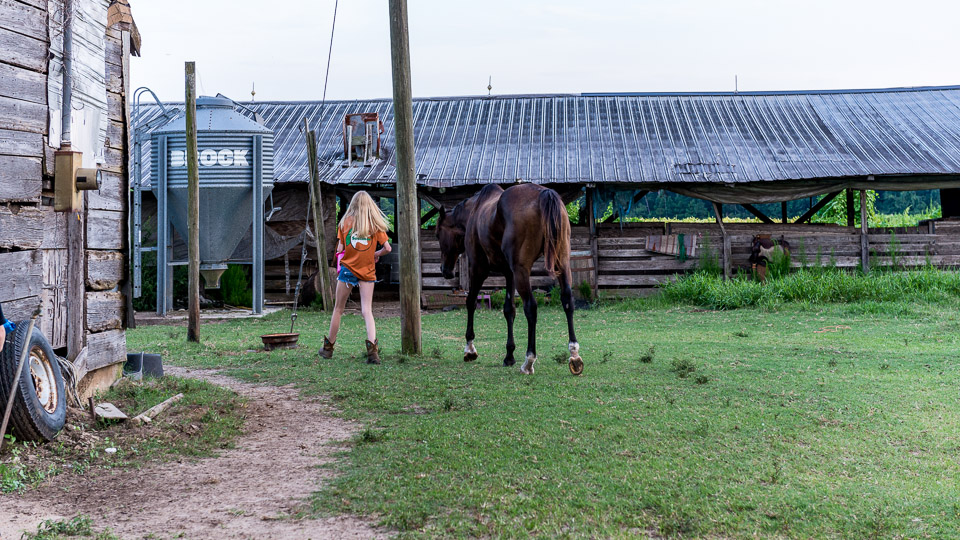
Horsemanship – Irrefutable Law 6
Take 4 people and ask them to take out the garbage from the kitchen. The first one you say, “Take out the garbage please.” The second one you say, “Get the garbage out now so we can have some time to play.” The third one you say, “Take the garbage bag out of the container, tie up the top, walk it out to the receptacle and place it in there, return to the kitchen and put a new, clean bag in the container then close the door.” The forth one you say, “I love it when you take out the garbage. You are such a man and I’m so lucky to have you with me.”
You can see the goal of taking out the garbage is the same but the way you lead the person into doing the task is different for each. This is because, according to Hippocrates about 2000 years ago, there are basically 4 types of people out there. The demanding dominant ones where you need to make the task their idea. The easy going one who avoids conflict. The one who if there is fun involved they will do anything. And the one who needs to know every step of the way how it is done. Most people are a mix of these with one being more dominant than the others.
As I have worked with horses I have discovered that the personalities of horses are similar to humans. Over the years many horsemanship gurus have expanded on these in ways people can follow. For example there is the extrovert and the introvert, the left brain thinking and the right brain thinking. It really is all the same with the bottom line being that to be an effective leader you will need to know which type you are leading.
**CONTINUED IN ARTICLE TAB**
Related material – Sometimes I have a lot of material here that I have written, podcasted, video blogs and other things. They will be listed in this tab.
Use the browser back button or menu to return to the index of topics.
⬇︎ CLICK ANY IMAGE BELOW TO REVEAL MORE INFORMATION ⬇︎ There are no images
Take 4 people and ask them to take out the garbage from the kitchen. The first one you say, “Take out the garbage please.” The second one you say, “Get the garbage out now so we can have some time to play.” The third one you say, “Take the garbage bag out of the container, tie up the top, walk it out to the receptacle and place it in there, return to the kitchen and put a new, clean bag in the container then close the door.” The forth one you say, “I love it when you take out the garbage. You are such a man and I’m so lucky to have you with me.”
You can see the goal of taking out the garbage is the same but the way you lead the person into doing the task is different for each. This is because, according to Hippocrates about 2000 years ago, there are basically 4 types of people out there. The demanding dominant ones where you need to make the task their idea. The easy going one who avoids conflict. The one who if there is fun involved they will do anything. And the one who needs to know every step of the way how it is done. Most people are a mix of these with one being more dominant than the others.
As I have worked with horses I have discovered that the personalities of horses are similar to humans. Over the years many horsemanship gurus have expanded on these in ways people can follow. For example there is the extrovert and the introvert, the left brain thinking and the right brain thinking. It really is all the same with the bottom line being that to be an effective leader you will need to know which type you are leading.
Over the years I have been able to identify the personality of the horse I’m working on within a minute or two. This just comes with working on about 70,000 horses. Many of you don’t want to wait this long so I have come up with a plan for you to become an expert identifier. To do this all you need to do is ask the horse. I don’t mean voicing your question. Just apply a few different ways of asking the horse to do something for you. Based on the response you will be close to guessing the personality.
First ask the horse to move to a different spot in the stall. If he goes willingly then he is probably a phlegmatic horse who is willing to do most anything without a reason. They are easy going. If he needs some instruction to move like “I need you to move back a full step please,” then he is a list making melancholy personality. If you wave a finger at him while looking at him in the eye and say, “Git!” then he might be a fun loving, playful sanguine. They usually also step forward again to be in your face. Finally, if you ask them to go backwards and the horse looks at you and either says, “Why should I,” or “Make me,” then he is a dominant, demanding choleric personality.
There are layers on top of these personalities. Intelligence is one of them. Stupid horses are just stupid and smart horses are smart. Here is another hint. Look at the size and clarity of the eyes and the distance between the two eyes. Eyeballs are a direct extension of the brain. They sprout out from it during development of the foal on stalks called the optic nerve. When you look at eyeballs you are actually looking at the horse’s (or person’s) brain. Eyes set wide apart and are large and clear are usually intelligent horses who will listen to you and give respect when earned. Narrow set eyes and eyeballs smaller than they should be (called pig eyed horses by horsemen) are less intelligent – sometimes a lot less. They can also be stubborn and unwilling to give back respect.
Horses with large foreheads especially looked at in profile are usually more intelligent and kinder. Horses with a crease in their head can either be difficult or a little slow in intelligence.
Of course there are always some horses that are just felons. I often say that even Al Capone (a notorious US gangster) needed a dentist. With gangsters you need just a little more confidence than the horse who, by definition, is very confident. They are not for the new horse handler.
I love most stallions that have been trained and handled well. Wild stallions can be difficult to impossible just because they are more confident than a human will ever be. They use expletives when they say, “No!” Here is something many horse owners don’t know. Almost every male horse (stallions and geldings) have up to 4 teeth in the interdental space called canine teeth that are tall, sharp and shaped like daggers. They are there to tear flesh in a fight. Most female horses do not have these teeth but those that do can be very confident, content with being alone, pushy with other horses, are often called the alpha mare and in a few they can even be stallion like in aggression. I personally love working on mares with canines because they connect so easily but they can be a challenge for a new horse owner. You can quickly feel for these teeth and this should be done before purchasing a horse.
There are some personalities that appear to be breed specific but I have not found this to be the case. Instead what people are seeing is that some breeds are more expressive than others. For example most Thoroughbreds can be more willing to express their personalities than a Morgan or some warmblood horses.
Personalities of horses rarely change. If it does it is because the horse wanted to but a person cannot change them through training.


Responses